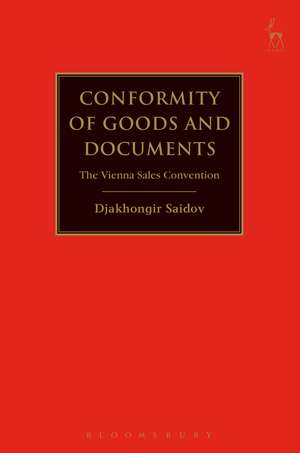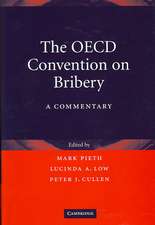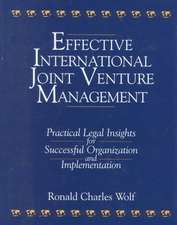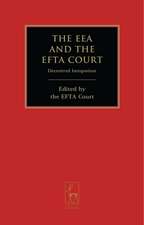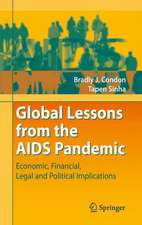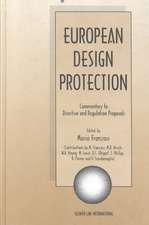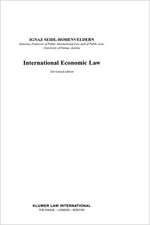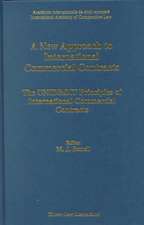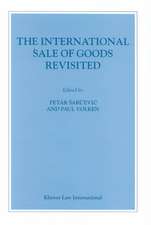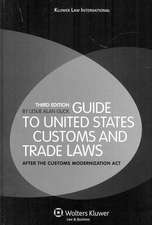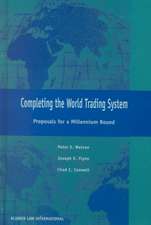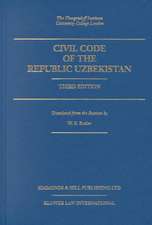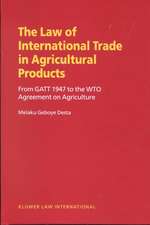Conformity of Goods and Documents: The Vienna Sales Convention
Autor Professor Djakhongir Saidoven Limba Engleză Hardback – 25 mar 2015
Preț: 775.43 lei
Preț vechi: 991.41 lei
-22% Nou
Puncte Express: 1163
Preț estimativ în valută:
148.40€ • 154.73$ • 123.33£
148.40€ • 154.73$ • 123.33£
Carte tipărită la comandă
Livrare economică 21 martie-04 aprilie
Preluare comenzi: 021 569.72.76
Specificații
ISBN-13: 9781849461559
ISBN-10: 1849461554
Pagini: 318
Dimensiuni: 156 x 234 x 18 mm
Greutate: 0.61 kg
Editura: Bloomsbury Publishing
Colecția Hart Publishing
Locul publicării:London, United Kingdom
ISBN-10: 1849461554
Pagini: 318
Dimensiuni: 156 x 234 x 18 mm
Greutate: 0.61 kg
Editura: Bloomsbury Publishing
Colecția Hart Publishing
Locul publicării:London, United Kingdom
Caracteristici
With a focus which is both analytical and practical, the book explores the Convention's requirements and engages with a substantial body of cases decided under the CISG as well as academic commentary.
Notă biografică
Dr Djakhongir Saidov is Chair in Commercial Law at King's College London.
Cuprins
1. Introduction I. A Brief Introduction to the CISG II. The CISG Today and the Purpose and Scope of this Book III. Rules on Conformity of the Goods: Underlying Considerations IV. The Seller's Liability and the Buyer's Remedies V. Conformity of Goods and Documents: Broader Insights into the CISG A. General B. Is the CISG a Well-Developed Sales Law? C. Developing Substantive Content Within a 'Minimalist' Structure D. Is the CISG the Best Law for International Sales? E. Defining the Boundaries of the CISG (i) General (ii) Proof (iii) Validity 2. Contractual Provisions on Conformity of the Goods I. General II. Pre-contractual Representations and Conduct A. Puffery and Opinions B. Public Statements C. Direct Communications Between the Parties D. Buyer's Knowledge III. Post-contractual Statements and Conduct IV. Description V. Quality A. Definition B. Various Formulations of Quality Standards C. Industry or Public Law Standards D. Legislative Changes and/or Knowledge Acquired Subsequent to the Contract E. Guarantee and Durability F. Quantity and Packaging 3. Fitness for a Particular Purpose I. Legal Nature of the Implied Rules on Conformity II. Fitness for a Particular Purpose: General ConsiderationsIII. Relationship with Article 35(1) CISG IV. Defining a Particular Purpose V. Conditions in a Specific Place A. Public Law Regulations B. Industry Standards and Standards Adopted by Private Entities and Trade Associations C. Climatic and Other Conditions VI. Durability VII. Making Known VIII. Reliance on the Seller's Skill and Judgement IX. Proof A. Burden of Proof B. Standard of Proof C. Admissibility of Evidence 4. Fitness for Ordinary Use I. General II. Does Article 35(2)(a) CISG Imply a Certain Level of Quality? A. Does Article 35(2)(a) CISG Require an Inquiry into the Notion of Quality? B. Different Quality Tests: The Debate III. Ordinary use IV. Description V. Durability VI. Health and Safety VII. Instructions, Manuals and Labels VIII. Servicing and Spare Parts IX. Minor Defects, Appearance and Finish X. Public Law Regulations A. Informational Asymmetry and Guidelines in New Zealand Mussels B. Imperative of a Case-by-Case Analysis C. Changes to Public Law Regulations and Other Related Changes Subsequent to the Time of Assessing Conformity D. Legal Nature of Public Law Regulations and the Reality of their Enforcement E. Is Article 35(2)(b) CISG Better Suited than Article 35(2)(a) to Deal with the Case of Public Law Regulations? XI. Proof 5. Conformity with a Sample or Model and Packaging; Exemptions from Liability I. Conformity with a Sample or Model A. General B. How Far is a Sample or ModelAllowed to 'Speak'? C. Relationship with Contractual Provisions and Other Terms Implied under the Convention D. Public Law Regulations E. ProofII. Packaging A. General B. Usual Manner C. 'Adequate Manner' D. Defective Packaging with Goods being Otherwise Conforming E. Proof III. Exemptions from Liability A. Buyer's Knowledge (i) General (ii) Actual Knowledge (iii) Implied Knowledge B. Article 39 CISG C. Disclaimers 6. Third Parties' Rights or Claims in Respect of the Goods (Article 41 CISG) I. General II. Third Parties' Rights III. Third Parties' Claims IV. Relevant Time V. Freedom of the Goods from a Third Party's Right or Claim VI. Seller's Rights or Claims VII. Exemptions A. Buyer's Agreement B. Buyer's Notice C. Exclusion Clause VIII. Domestic Rules on Validity 7. Third Parties' Rights or Claims Arising from Intellectual Property (Article 42 CISG) I. General II. Industrial or Other Intellectual Property III. Rights or Claims A. General B. Frivolous Claims C. Relevant Time D. Seller's Knowledge IV. Territorial Restrictions V. Exemptions from Liability A. Buyer's Knowledge B. Compliance with the Buyer's Specifications C. Other Exemptions VI. Burden of Proof VII. Concluding Observations VIII. Freedom from Third Parties' Rights or Claims: an Aspect of 'Conformity'? 8. Conformity of Documents I. Introduction II. Typical Documents: An OverviewA. Transport Documents B. Other Documents III. Conformity of Documents A. Documentary and 'Physical' Obligations B. What Documents Must the Seller Deliver? C. Conformity of Documents (i) Transport Documents: Contractual Requirements (ii) Transport Documents: Contractual Silence (iii) Other Documents IV. Quality, Quantity, Origin and Other Certificates: Conformity and Beyond A. General B. Conformity C. Finality Clause D. Certificate as Extra-contractual Documentary Evidence V. Emerging Themes A. Is the CISG a Construction Site for Documentary Duties? B. Assessing Conformity: Face of Documents versus Extrinsic Factual Inquiry C. Attack on Party Autonomy and Legal Certainty D. Documentary Performance and the Future of the CISG
Recenzii
This is an interesting and useful monograph based on a broad and comparative research. The text is thoughtfully structured and clearly presented; it is both easy to use and to follow the text expounded and reasoning of the author, who is clearly a specialist in the field.
The book is an extremely useful resource.The author's experience in this area of law is evident in his ability to explain and answer contentious.questions of law. This book serves its purpose well through a concise,yet detailed and informative approach.
A reference book for commercial lawyers and students of the CISG that provides a useful in-depth analysis of a limited set of CISG articles . It is clearly written and well organised so that a reader can go to a particular subtopic quickly.
The book is an extremely useful resource.The author's experience in this area of law is evident in his ability to explain and answer contentious.questions of law. This book serves its purpose well through a concise,yet detailed and informative approach.
A reference book for commercial lawyers and students of the CISG that provides a useful in-depth analysis of a limited set of CISG articles . It is clearly written and well organised so that a reader can go to a particular subtopic quickly.
